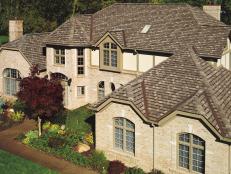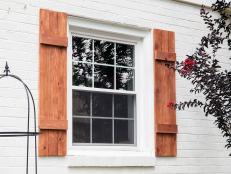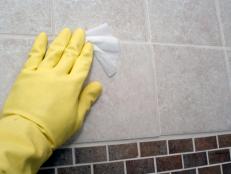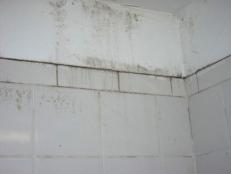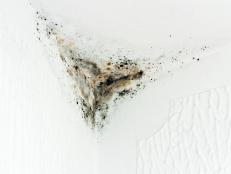Control Mold Through Water Management
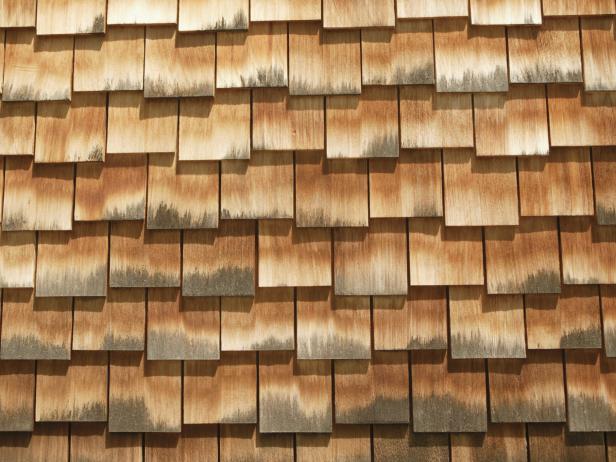
Comstock
Consumers expect their homes to be safe, durable, comfortable environments. Increasingly, however, homebuyers are becoming aware of potential problems in home construction. Mold, caused by water intrusion, has become a major concern for the construction industry.
Mold is considered to be the #1 indoor air quality problem in U.S. housing. Beyond the health hazard of mold, water intrusion can lead to structural rot, cosmetic issues and poor long-term durability. Water can also contribute to other problems, such as pest infestation.
Now more than ever, builders are under pressure to prevent water intrusion and the resulting mold growth not only to meet the high expectations of consumers, but also to maintain insurance coverage and to protect themselves against potentially crippling litigation.
Wood-Based Products
Wood-based products, such as framing lumber and wood sheathing, need the greatest amount of attention to water management for three reasons:
- Wood can absorb large amounts of water, increasing its moisture content.
- Once wood absorbs water, it takes much more energy for the wood to dry than it took for the wood to get wet. It's easy for wood to get wet, but it's relatively difficult for it to dry.
- Much of the framing is concealed in wall cavities, where it's exposed to limited amounts of air, making it even more difficult for the wood to dry.
When wood framing and sheathing get wet and are unable to dry, over time, they can rot and cause structural damage, possibly causing the home to settle or shift. Wet wood framing and sheathing in enclosed spaces, such as wall cavities, have very little opportunity to dry, because these enclosed spaces experience little air movement, and in many cases are insulated from indoor or exterior heating sources.
Mold Growth
To prevent mold growth, you should understand what makes mold grow. Mold spores flow continually through both indoor and outdoor air. In modern homes, the concentration of mold spores isn't high enough to create problems for most people. Mold becomes a problem only if it begins to grow, and mold spores by themselves don't cause mold growth.
To grow into mold colonies, mold spores need three things: a food source, a temperature above 32 degrees Fahrenheit, and moisture. All of these are found in a home, which is made with organic materials and is kept at a temperature conducive to mold growth. Controlling moisture is the key to preventing mold growth. You can't completely eliminate mold spores from the surrounding air, but you can control water intrusion.
Water Management
The fundamental principle of water management is to shed water by directing it down, out and away from the home. The key to this principle is positive drainage. The sooner you can drain water out and away from the home, the better. Nothing should be flat or sloped toward the home's interior. When you're assessing a home for water intrusion potential, think about the path water will take as it moves down the home's exterior. Quite simply, provide a path that directs water down and away from the home without exposing any sensitive materials to the water.
Making the exterior surface as weather-resistant as possible is only part of the drainage solution. To prevent water intrusion, you must think of the home as a water management system, and apply three basic drainage strategies: the drainage plane, shingling and flashing.
Drainage plane. The drainage plane creates a barrier to water that protects the parts of the home that must not get wet. The drainage plane protects the vulnerable shell of the home by providing a barrier to water, creating a separation between the water and the home. Drainage plane materials fall into four general categories: felt building paper, house wrap, thin structural sheathing, and rigid foam sheathing. Whatever material you use, providing continuous coverage at joints and corners, layering the materials shingle fashion whenever possible, and using the proper flashings are the keys to providing the home with an effective drainage plane.
Shingling. As rain moves down the exterior finish and the drainage plane, it travels past individual building products, such as the finish roofing and wall cladding, window flanges, and flashing. You need to layer these materials strategically, keeping the water on the outermost layers and away from the sheathing and framing. This layering strategy is called shingling. The drainage plane should be applied shingle fashion. When flashing is installed for a vent pipe, for example, the head flange should be tucked under the course of roofing paper above it, and the bottom flange should overlap the course of roofing paper below it. Overlapping construction materials shingle fashion essentially stops the momentum of water, giving it a path of least resistance downward and away from the home.
Flashing. The home's exterior isn't a continuous surface. It has intersections, penetrations, and abrupt terminations. Wherever water moving down the exterior or the drainage plane has to change direction, it needs the help of flashing to keep it moving down and away from the home. To direct water away from the home, your flashing must be high enough and wide enough to guide water out of vulnerable areas. Imagine water that's flowing across an open valley on the roof. If that water can flow across the valley, up the flashing, and then down behind the flashing, the flashing hasn't done its job. The flashing needs to be high enough that water, driven by wind or its own momentum, will move back down again without moving up and behind the flashing.
To manage water effectively, you need to think about the path water will take as it moves down the home's surfaces, as well as the forces acting on water to move it toward the home's interior, so that you can develop strategies that provide drainage. Remember that drainage is the key to water management.






